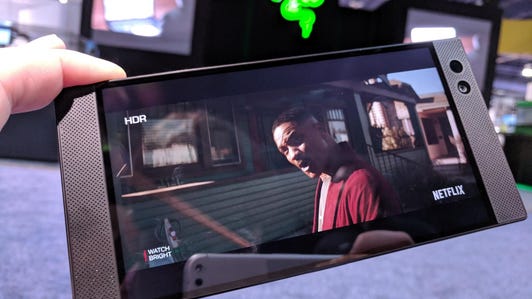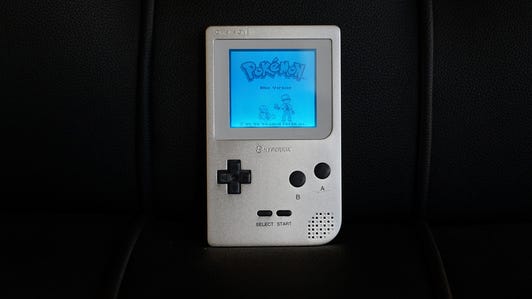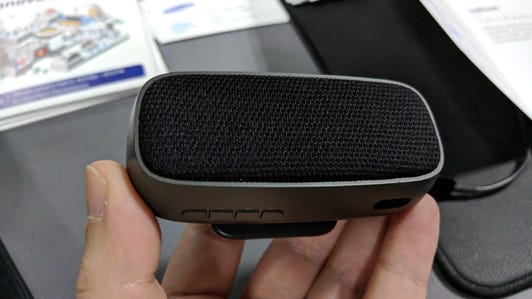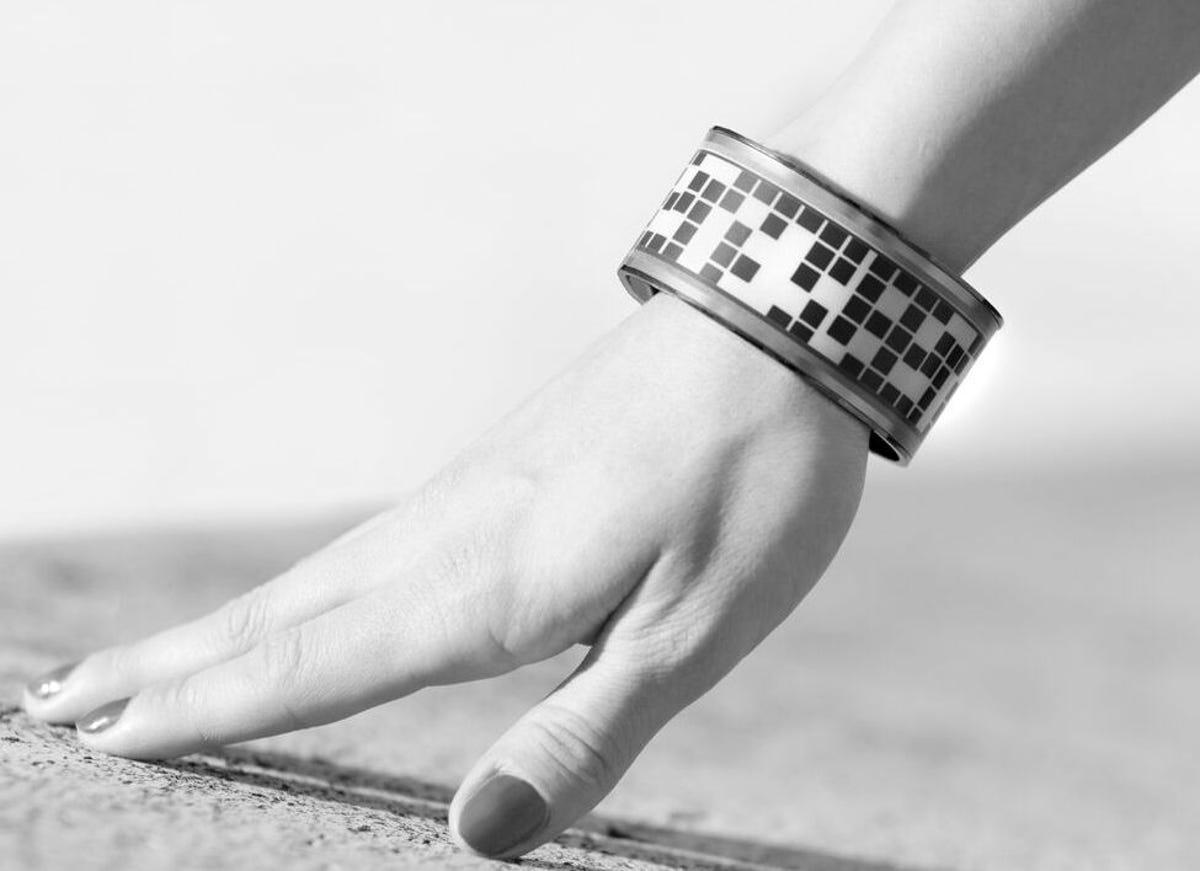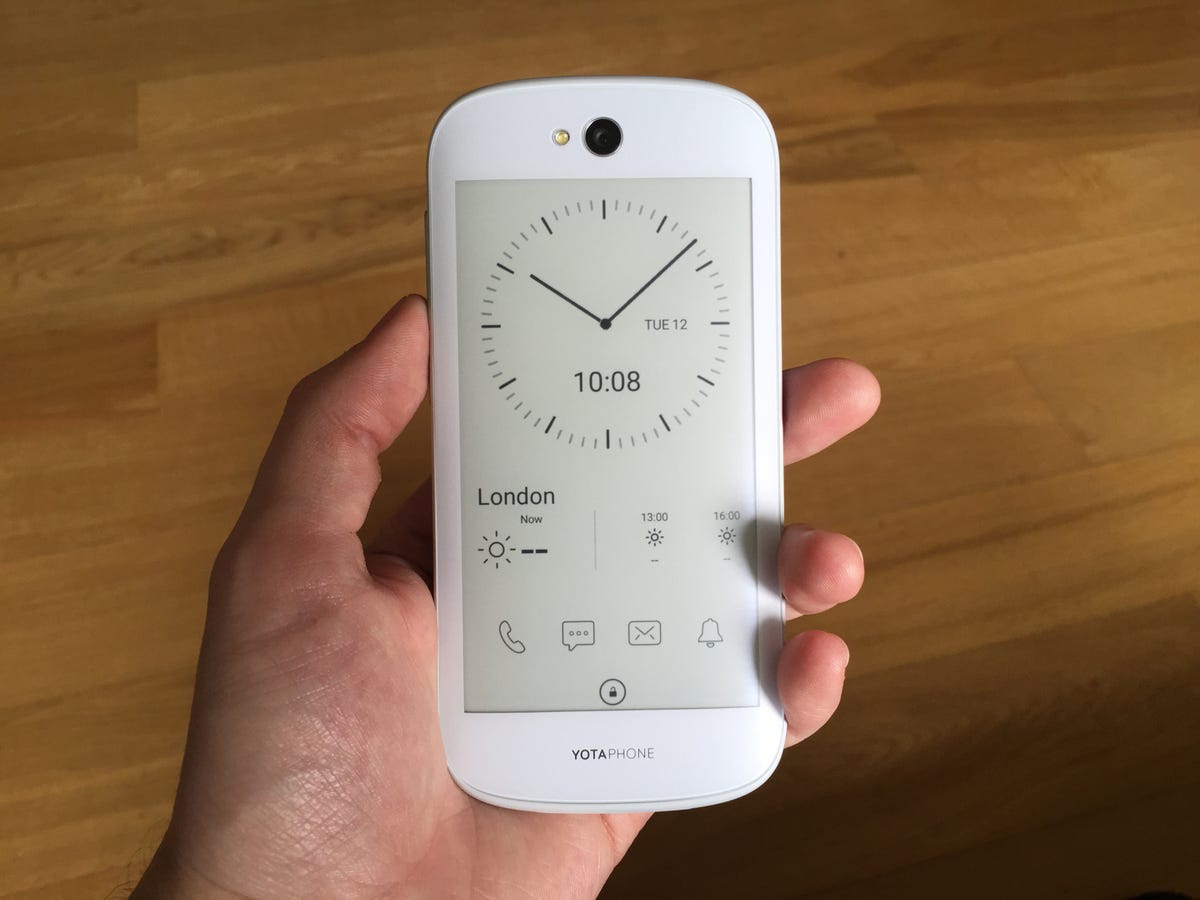When Apple announced the new iPhone XS, XS Max and XR on Sept. 12, one particular feature captured the imagination of international travelers and multiple phone-owners alike: the dual SIM.
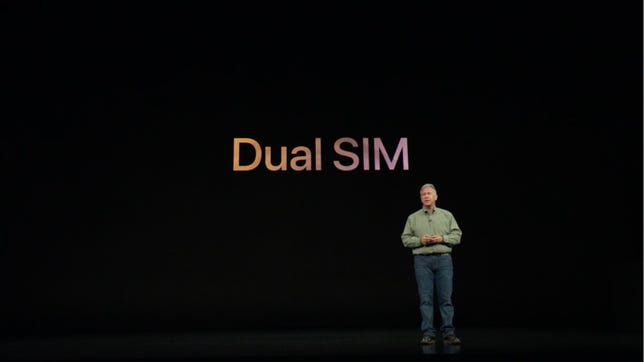

Josh Miller/CNET
If the processor is your phone’s brain, then the SIM, or subscriber identity module, is its soul — a tiny little chip that stores your phone number and connects you to a cellular network. Essentially, it’s what makes your phone a phone.
If you’ve ever wanted two phone lines on one device, Apple’s new Dual SIM Dual Standby technology could be a life-changer. It will make it much more practical to have two phone numbers on one phone — one for business, another for personal use. And it will make it considerably easier and less expensive to use your own phone when traveling abroad.
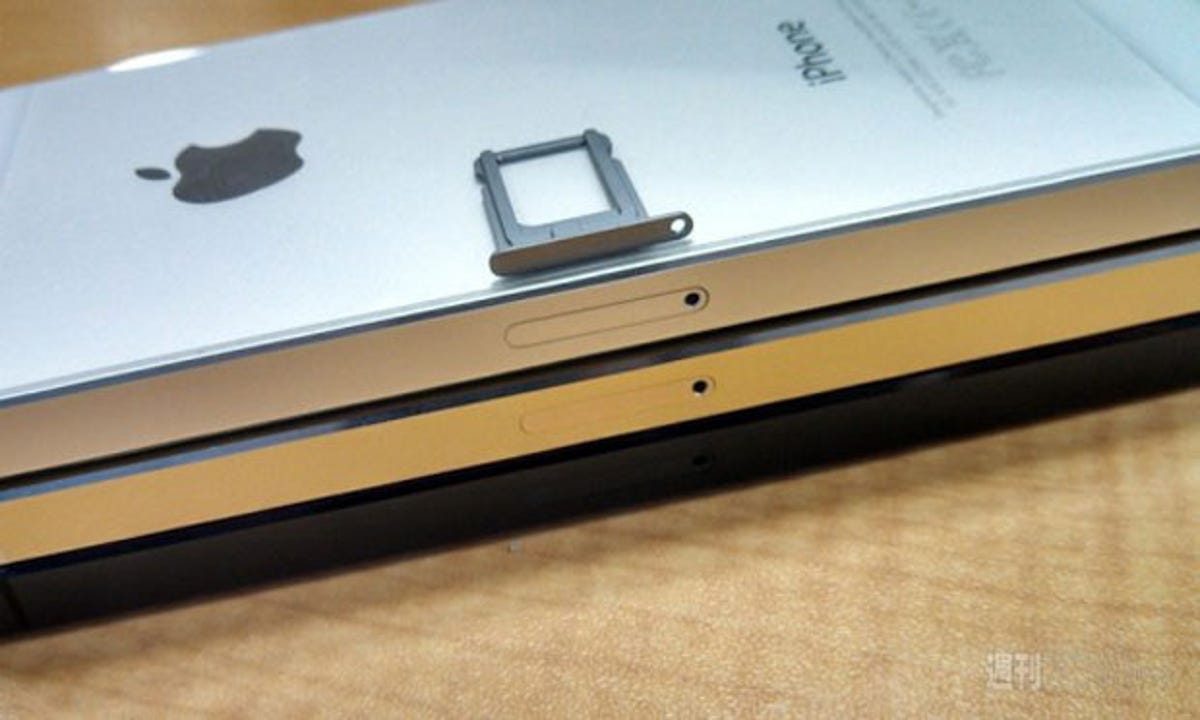

iPhones have always had one “plastic” SIM card — until now.
CNET
On Oct. 30, Apple released iOS 12.1, turning on support for its eSIM technology — which allows you to activate additional lines — on the iPhone XS, iPhone XS Max and iPhone XR (outside of China). After an initial delay due to issues including “degraded” service and problems linked to visual voicemail, AT&T and Verizon have now begun to support eSIM on the newest iPhones. (T-Mobile has said that it expects to add the feature before the end of the year.)
Read: AT&T and Verizon launch eSim support for iPhone XS and XR
After some initial hiccups due to technical issues, Apple and some of the largest US carriers have now worked through the kinks of deploying dual-SIM via eSIM. And though it won’t be the decisive factor for most phone shoppers this year, Apple’s support marks a major step closer into the mainstream for dual-SIM phones. Below is a digest of what we currently know about Apple’s take on dual-SIM and eSIM — and what it means for the three 2018 iPhones.
Note: The information presented below represents our current understanding of an evolving technology. If you’re buying an iPhone XS, XS Max or XR to take advantage of dual-SIM and eSIM technology, you’ll need to buy an unlocked phone (see below). Check with your provider before committing to a purchase.
What does Apple’s dual-SIM announcement mean?
The 2018 iPhones will let you have have two different phone numbers on the same phone. You’ll be able to make and receive calls and send and receive texts on either line.
Why would I want a dual-SIM phone?
There are two major benefits. You can have two different phone lines — say, one for business and another for personal use — without the burden of carrying two phones. And when traveling internationally, dual SIM makes it easier to add a local plan to your phone to avoid costly international roaming and data charges.
Read: Why you want a dual-SIM phone
So, the iPhones will have both an eSIM and a plastic SIM?
Yes. The new iPhones will have a traditional plastic nano-SIM, the familiar hardware-based SIM chip that identifies you to your carrier network, and an eSIM, the newer software-based equivalent.
And here’s the big thing: The eSIM can accommodate multiple phone numbers — which you can add, delete and configure right from your iPhone’s settings. In contrast, a plastic SIM needs to be physically removed and swapped.
In theory, once eSIM technology is widely supported by carriers in the US and internationally, Apple could phase out the plastic SIM entirely. For now, by giving the 2018 iPhones both a plastic SIM and eSIM, Apple is covering all of the bases.
iPhone XS, iPhone XS Max, iPhone XR: See Apple’s biggest phones ever
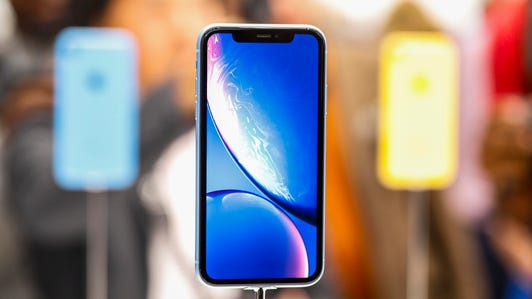

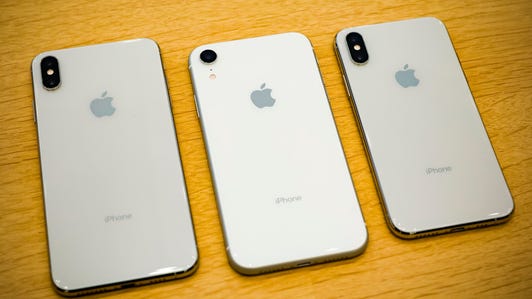

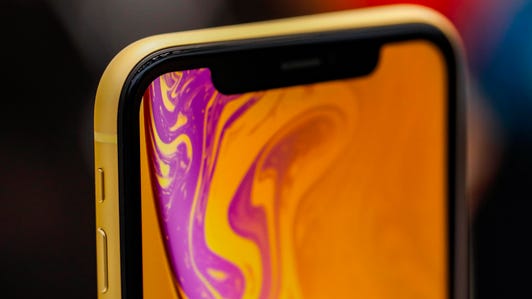

What is Dual SIM Dual Standby?
Apple’s take on dual SIM is called Dual SIM Dual Standby. It means that the new iPhones can manage two phone lines simultaneously — calls coming in to either line will ring your phone, and you’ll be able to easily make calls and send texts from either line without reconfiguring settings or swapping out SIM cards.
Note that you won’t be able to send and receive data on both lines simultaneously, however. If one line is on a call, incoming calls to the other number will go to voicemail.
How is eSIM different from Apple SIM?
Originally known as Apple SIM, the first version of Apple’s software-based SIM showed up on the LTE-enabled iPad and Apple Watch Series 3. We believe the fundamental technology is the same, but iOS 12 has introduced improvements to the user interface.
Can I add lines from different carriers?
Yes. Apple says that you can add lines from two different carriers, but only if your iPhone is unlocked. And this is the major catch. If your phone is not unlocked, both plans must be from the same carrier. And, if a CDMA carrier — such as Verizon, Sprint, US Cellular, Boost and Virgin — provides your first SIM, your second SIM won’t support CDMA.
Read: Unlocked phones vs. locked phones
Can I use eSIM on a locked iPhone?
When you buy an iPhone directly from Apple, online or at an Apple store, it’s unlocked — meaning that it can be configured for and activated on any carrier’s network (e.g. AT&T, Verizon, Sprint). A Genius inserts an AT&T SIM, for example, activates your phone on AT&T’s network, and you’re off to the races.
But once a phone is locked, your options become much more limited. As my colleague Maggie Reardon explains, “A locked phone has a software code on it that prevents you from using it on another network. An unlocked phone either doesn’t have the software lock on it or someone was able to get a code that unlocks the software. Once a device is unlocked, you can pop out the SIM card and put in a different SIM and get service.” Most carriers require you to fully pay of your phone before they’ll unlock it, and other restrictions may apply. (AT&T’s Unlock Portal provides a checklist of requirements for unlocking your phone and switching to another carrier.)
An unlocked phone with a plastic SIM needs a new plastic SIM in order to switch to a new carrier. An eSIM, on the other hand, can accommodate multiple SIM profiles from multiple carriers. Until now, eSIM hasn’t garnered much support from carriers, who are understandably wary of making it easier for customers to activate another carrier’s service.
19 iOS 12 features you should be using now
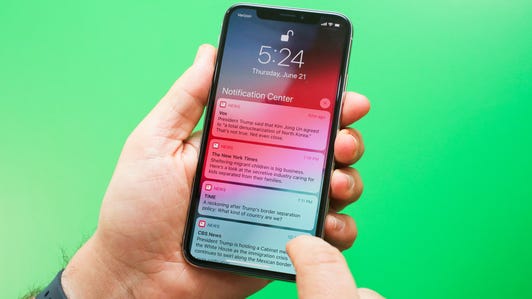

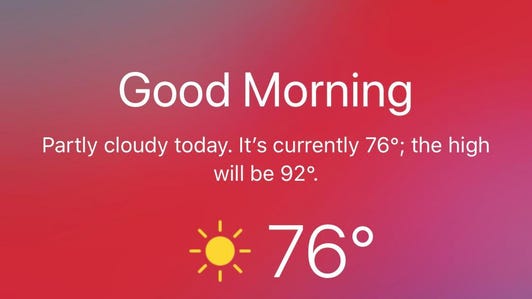

When will Apple launch its eSIM feature?
Apple activated eSIM functionality when it released iOS 12.1 on Oct. 30. But after discovering some technical issues, US carriers called time out on supporting eSIM. Since then, AT&T and Verizon have activated support for the feature on their end.


Apple
How do I set up eSIM on the new iPhone?
Owners of a 2018 iPhone will be able to access the eSIM through the iPhone settings. According to Apple VP Phil Schiller, you’ll be able to use the phone’s camera to scan a carrier QR code, which will kickstart the process for activating a second line. Then, iOS will let you select a default line for calling and messaging, choose a label for each line, and so on.
Apple has listed step-by-step instructions for setting up an eSIM on its support site.
Can an eSIM be overwritten?
An eSIM can be overwritten and accommodate a phone plan from any carrier that supports the technology.
Which carriers support eSIM technology?
Apple says that eSIM works in 16 countries. In the US, AT&T and Verizon officially initiated support for the feature during the first week of December. (A Sprint spokesperson assured CNET that the company will support the feature in the near future.) Internationally, participating carriers currently include EE, Vodafone, Truphone, Bell, GigSky, Jio, Airtel and Deutsche Telekom.
At the Sept. 12 keynote, Apple VP Phil Schiller said that more carriers will add support throughout the fall and into next year.
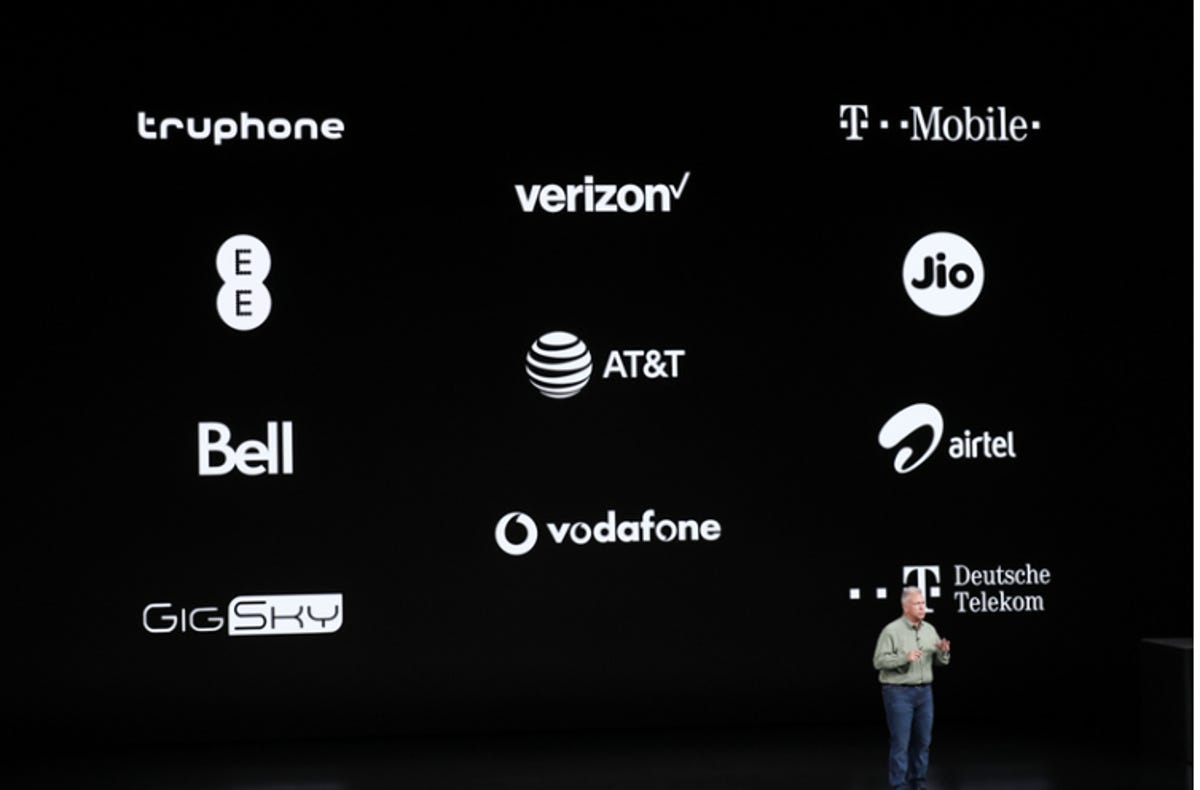

Kent German/CNET
Are there are other phones that have dual-SIM technology? And don’t the newer Google Pixel phones have an eSIM?
There are plenty of phones that can accommodate two SIM cards, though most of them aren’t available in the US, but only a few so far that support eSIM. The Google Pixel 2 and Pixel 3 both have eSIM — but it’s primarily for use with Google’s Project Fi cellular service.
Do I have to get approval from my main carrier to add a second phone number?
No, you don’t need approval or permission to add a second phone number. In fact, the major upside of eSIM is that you don’t even need to go to a store to activate that second line — it can all be done remotely.
Why doesn’t eSIM work in China?
Apple announced a special edition of the new iPhones for China, which will have two plastic SIM card slots instead of eSIM technology. According to Neil Shah, who covers mobile technology for Counterpoint Research, dual-SIM technology is popular in China — but few carriers there have built out support for eSIM technology.


James Martin/CNET
Will we see more eSIM phones in the US?
Probably. After all, Apple often sets the trends. Will Stofega, who covers mobile phones for IDC, says that carriers have been wary of eSIM, fearing that it could lead customers to jump from plan to plan. But he points out that a new international standard set in June 2016 may pave the way for greater adoption of eSIM in the US and abroad, especially if carriers realize all of the benefits of selling and provisioning phones remotely — activities that have needed to be done manually in stores, until now.
The 5G revolution is coming: Here’s everything you need to know.
Originally published on Sept. 27.Update, Dec. 7: Updated with news of eSIM support from AT&T and Verizon.




